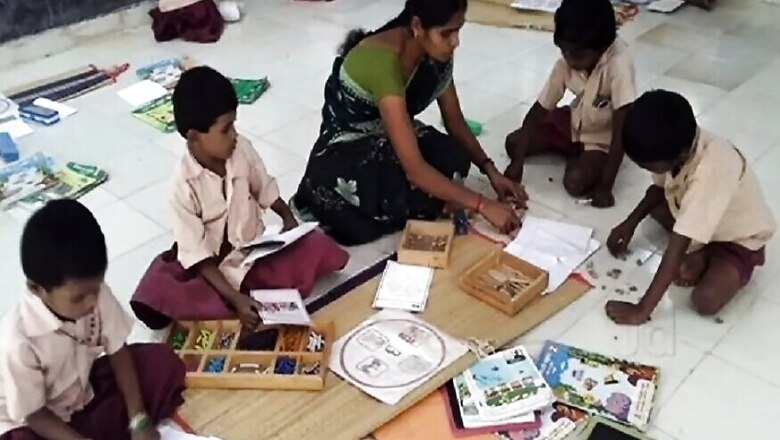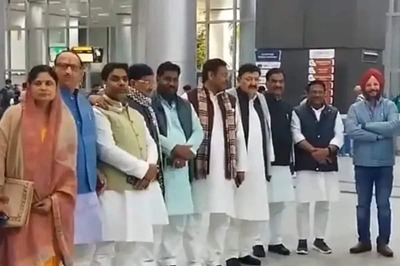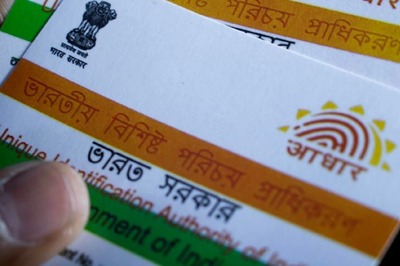
views
New Delhi: Centrally sponsored social sector schemes have seen over 85% of utilisation of funds and experts say this as a good sign ahead of the Union Budget 2020-2021.
According to the experts resource adequacy on these schemes would have to be factored in and “low-fund utilisation cannot be used (as an excuse) for low allocation of funds for these schemes.”
A report, titled ‘The Budget Trails by the Tata Trusts and Centre for Budget and Governance Accountability (CBGA)’, released on Friday said there has been adequate utilisation of funds.
The report has several series one of which is on ‘fiscal governance reforms at district level for improving fund flow and utilisation in development schemes’. It notes that during the period of analysis —2017-18 and 2018-19 — districts have shown satisfactory levels of funds being used under various centrally sponsored schemes.
Subrat Das, Executive Director of CBGA, told News18, “When we say fund utilisation of centrally sponsored scheme is over 85%, it means utilisation has been good. This means funds are getting utilised and hence, low-fund utilisation should not be seen as a reason to not increase the allocation of funds for these schemes.”
He said typically the state finance departments and the Union finance ministry argue that funds meant for social sector schemes remain unspent. “This narrative was developed during 2008-2013. This mindset has to change as this narrative has worked against budget allocation for such schemes.”
Fund utilisation in schemes such as Integrated Child Development Services (ICDS), Sarva Shiksha Abhiyan (SSA), Mahatma Gandhi National Rural Employment Guarantee Scheme (MGNREGS), National Social Assistance Program (NSAP), National Rural Drinking Water Program (NRDWP) and Swachch Bharat Mission – Gramin (SBM-G) has exceeded 85% during 2017 and 19.
“It indicates the public discourse on issues relating to under-utilisation of funds available with the district has to be focused more on quality of fund-utilisation in these schemes. The question on resource adequacy for these schemes should be factored in the run-up to the Union Budget 2020-21,” one of the researchers said.
The analysis has generated evidence to suggest that resource-absorption capacity in schemes has improved compared to what is reported in the existing literature for earlier years. Hence, the narrative that large portions of available funds remain unutilised needs to be changed now.
The findings suggest that while some schemes have well, there remains scope for improvement in schemes like Midday Meal (MDM) and National Health Mission (NHM) in some districts. The analysis reveals that such schemes performed moderately in terms of utilisation of funds.
“There are a number of factors, including delays in fund flow, inadequate unit costs, shortages of frontline service providers and technical staff and poor financial delegation that affect full utilisation of available funds which needs to be addressed urgently,” the report said.
However, the extent of fund utilisation across schemes and districts is not uniform, not even among the well-performing ones. The closer attention to the quality of fund utilisation finds “skewed distribution of expenditure across quarters, and uneven utilisation of funds across components and blocks in the study districts.”
“Expenditure during the first quarter of the financial year is very low across schemes. Districts were found to have utilised the largest share of funds in most of the schemes during the second or fourth quarters of the financial year, with some exceptions though,” said the report.
Areas of Field Work
The two-year research project, focused on 10 social sector schemes in five districts of Balasore and Bolangir in Odisha, Chandrapur in Maharashtra, East Singhbhum in Jharkhand and Krishna in Andhra Pradesh.
The schemes studied are SSA, MDM, NHM, ICDS, SBM, NRDWP, MGNREGS, NSAP, Pradhan Mantri Awas Yojana (PMAY), Pradhan Mantri Fasal Bima Yojana (PMFBY) and Rashtriya Krishi Vikas Yojana (RKVY).
This study has analysed problems in fund utilisations at the district level by placing a district budget analyst (DBA) in each of the selected district headquarters.
The study proposes some actionable policy measures to address delays in fund flow, rigid guidelines, human resource issues, and accountability and transparency issues.
“The knowledge outputs highlight challenges around fund flow, extent and quality of fund utilisation, budget information architecture and shortage of human resources for effective implementation of social sector schemes,” said the report.
Policy recommendations
Experts have observed that the level of fund utilisation under SSA, ICDS, MGNREGS, NSAP, and to a large extent under SBM-G and NRDWP points towards “issues relating to resource inadequacy rather than underutilisation of the available funds with the implementing agencies.”
“Some districts spent in excess of the available funds for these schemes indicating that the resource absorption capacity of implementation agencies has increased over the years,” it added.
The researchers have suggested that Central ministries should look into the matter on a case-to-case basis and approve and release more money for these schemes.
The experts have recommended that the state governments must ensure smooth flow of funds and also allow districts to recruit human resources along with appropriate delegation of powers to the district authorities for effective scheme implementation at the ground level.



















Comments
0 comment